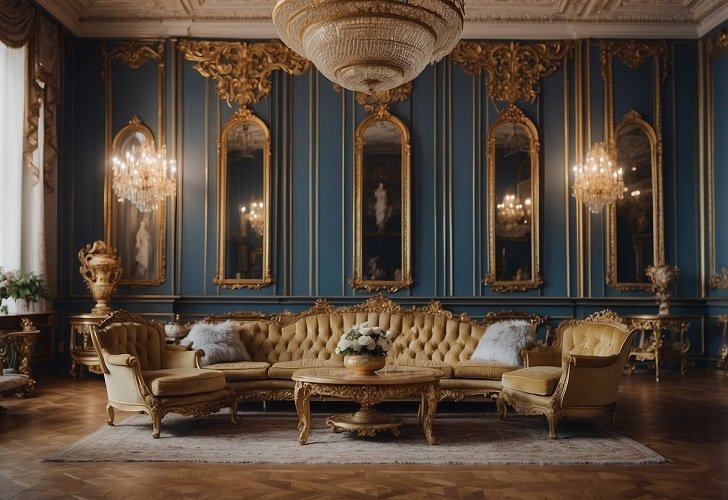Catherine the Great, the empress of Russia from 1762 to 1796, is renowned for her political acumen, cultural achievements, and monumental contributions to Russian society. Among her many legacies, the grand designs of her furniture stand out as a testament to her sophisticated taste and the opulence of her court. Her reign marked a period of significant artistic patronage, and the furniture crafted under her direction continues to be celebrated for its exquisite craftsmanship and grandeur Catherine the Great’s Furniture.
The Influence of European Styles
Catherine the Great was a fervent admirer of European culture, and her furniture designs were heavily influenced by the styles popular in Western Europe during her time. She invited numerous European craftsmen, artists, and architects to Russia, creating a cultural exchange that enriched Russian art and design. French Neoclassicism, with its emphasis on symmetry, elegance, and grandeur, was particularly influential in shaping the aesthetics of Catherine’s furniture.
The empress’s fondness for the classical antiquity revival can be seen in the intricate details and motifs that adorned her furniture. Greek and Roman influences were evident in the use of columns, pilasters, and classical figures. This blend of Russian and European styles resulted in a unique and lavish aesthetic that defined Catherine the Great’s furniture legacy.
The Role of Russian Craftsmanship
While European influences were significant, the contribution of Russian craftsmen cannot be overlooked. Catherine the Great fostered the development of local artisanship, ensuring that Russian traditions and techniques were preserved and celebrated. The collaboration between Russian and European craftsmen led to the creation of furniture pieces that were not only beautiful but also structurally innovative and durable.
Russian furniture makers of the time were known for their exceptional skill in marquetry, a technique that involves inlaying pieces of wood, ivory, or metal into furniture to create intricate designs. This technique was employed to great effect in Catherine’s furniture, resulting in pieces that were both visually stunning and complex in their construction Catherine the Great’s Furniture.
The Hermitage and Its Treasures
The Hermitage Museum, founded by Catherine the Great in 1764, houses one of the most extensive collections of her furniture. The Winter Palace, which is part of the Hermitage complex, served as the primary residence of the Russian tsars, and it was here that Catherine’s taste in furniture was most prominently displayed. The museum’s collection includes an array of chairs, tables, cabinets, and other furnishings that offer a glimpse into the opulent lifestyle of the Russian court Catherine the Great’s Furniture.
One of the standout pieces in the Hermitage collection is the Peacock Clock, a magnificent example of the luxurious and intricate designs favored by Catherine. This mechanical clock, created by English jeweler James Cox, features a life-sized peacock that spreads its tail feathers, a rooster that crows, and an owl that turns its head. The clock is adorned with gold, silver, and precious stones, epitomizing the grandeur of Catherine’s furniture collection.
The Influence of Classical Mythology
Classical mythology was a recurring theme in Catherine the Great’s furniture designs. Mythological figures and scenes were commonly depicted in the carvings, marquetry, and embellishments of her pieces. This fascination with mythology was part of Catherine’s broader interest in the Enlightenment ideals, which often drew upon classical antiquity for inspiration.
For example, many of Catherine’s furniture pieces feature motifs of gods and goddesses, such as Venus, Apollo, and Hercules, symbolizing beauty, music, and strength, respectively. These mythological references were not only decorative but also conveyed the empress’s aspirations and values, aligning her rule with the grandeur and wisdom of the classical era Catherine the Great’s Furniture.
The Use of Luxurious Materials
The materials used in Catherine the Great’s furniture were as important as the designs themselves. Exotic woods, such as mahogany, rosewood, and ebony, were commonly used, often imported from far-off lands. These woods were prized for their rich colors and fine grains, adding to the luxurious feel of the furniture.
In addition to fine woods, Catherine’s furniture often featured gilding, the application of gold leaf to surfaces. Gilding was used to highlight intricate carvings and to add a touch of opulence to the furniture. Precious stones, such as malachite, lapis lazuli, and jasper, were also inlaid into the furniture, creating stunning contrasts and enhancing the overall visual impact.
The Legacy of Catherine the Great’s Furniture
Catherine the Great’s furniture legacy extends beyond the pieces themselves; it represents a period of artistic flourishing and cultural exchange that had a lasting impact on Russian art and design. Her patronage of the arts and her efforts to blend Russian and European styles created a unique and enduring aesthetic that continues to be admired and studied.
Today, Catherine’s furniture is not only a testament to her personal taste and the opulence of her court but also a valuable part of Russia’s cultural heritage. Museums around the world, including the Hermitage, display her furniture as examples of the pinnacle of 18th-century craftsmanship and design. These pieces offer insight into the artistic and cultural milieu of Catherine’s reign, highlighting the empress’s role as a patron of the arts and a promoter of cultural enrichment.
Conclusion
The grand designs of Catherine the Great’s furniture legacy are a reflection of her sophisticated taste, her embrace of European influences, and her support for Russian craftsmanship. Her furniture pieces, characterized by their opulence, intricate details, and classical motifs, continue to captivate and inspire. Through her patronage, Catherine the Great not only left behind a collection of exquisite furniture but also fostered a cultural renaissance that enriched Russian art and design for generations to come.
